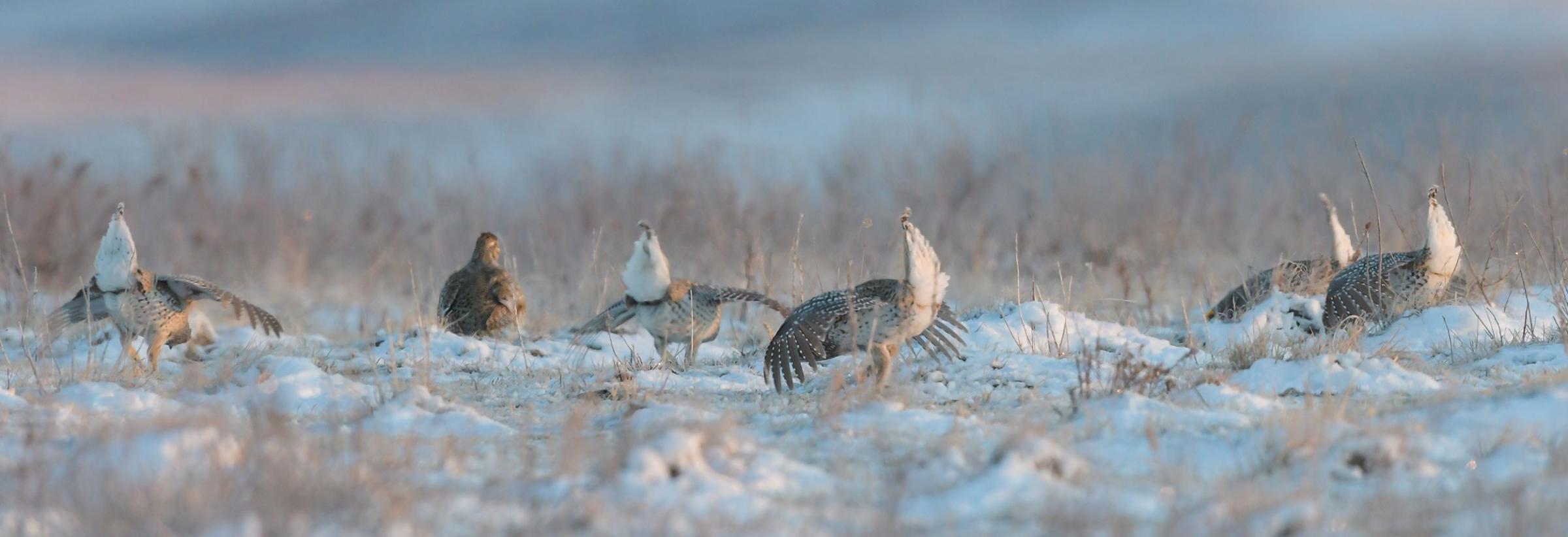
Back Cast
Why this spot?
There’s nothing seemingly remarkable about this particular prairie hilltop that separates it from the others rimming the valley wandering north of here.
Maybe what distinguishes it is hidden under 8 inches of snow, the remains of an unrelenting winter that showed few signs of retreating until early April.
It doesn’t matter, really. What does is that the sharp-tailed grouse dig it, returning year after year without hesitation as the days lengthen in spring to participate in a mating ritual that’s as old as the countryside.
Like the unfailing marriage of opposing poles of a magnet when held too close together, the pull on the birds to this Emmons County dancing ground starting in early March is without argument. Peak activity is roughly mid-April when, during ritualized displays of flared tails, busy feet and inflating and deflating air sacs, males establish territorial boundaries and advertise to females.
This spring, on this 11th day in April, the grouse arrive about sunrise or shortly thereafter. There are roughly 30 of them. Some square off in pairs, extend their wings and stamp their feet, while others dance in groups. Then, as if some kind of signal has been passed between the participants spread out over 20 yards of prairie, they all stop at once. And do nothing.
This sharp-tailed grouse version of a TV timeout lasts for minutes before play once again resumes.
Driving here this morning I wondered if things would be different this time compared to past years. I questioned whether the attendance would be down because the winter was so difficult, or that the grouse might delay things because off all the snow still covering the landscape.
Silly me.
I’ve been told that sharp-tailed grouse will dance in 2-3 feet of snow if that’s what’s presented to them. Driven by photoperiod, not by weather, the hardy, native birds gather without pause spring after spring no matter the circumstances.
Unfortunately, the circumstances this spring — an abundance of snow on the landscape, followed by mud-slick roads — was expected to make it difficult, if not impossible, for Game and Fish Department biologists to survey dancing birds on those difficult-to-get-to leks.
Biologists have been counting grouse on North Dakota leks for decades and this isn’t the first time, considering the temperament of the Northern Plains weather, that they may not complete the grouse surveys in full. Even so, there are protocols for such hurdles that enable them to capture the best sample size of dancing birds.
What’s certain is that the grouse will be in attendance even if no one shows up to watch.
